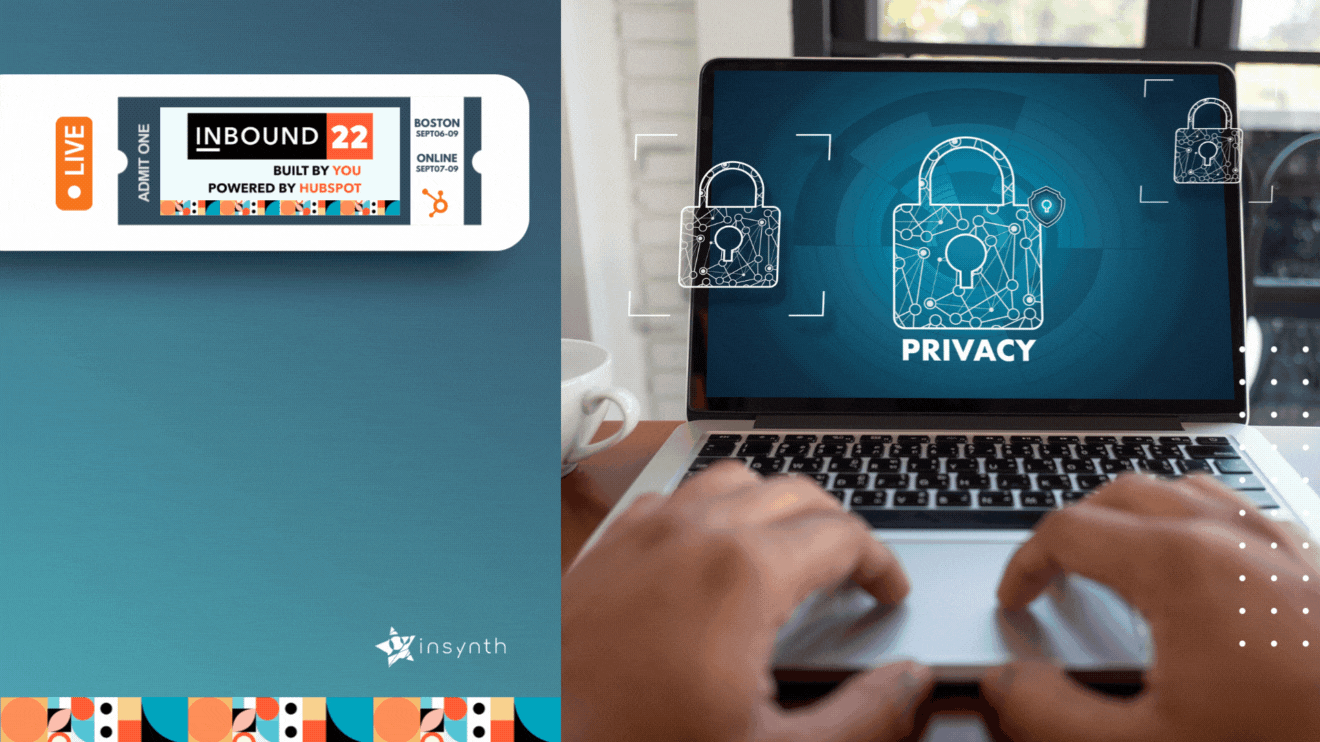
LIVE FROM #INBOUND22
The ecosystem of digital marketing is experiencing a major shift. With more customer demands, new regulations and updates in technology have made privacy the forefront of a marketer’s mind.
But can you keep up with all these recent changes and rules? And what does this mean for marketing as a whole?
Parish Aggrarwal, head of ad measurement and privacy at Google, gave us at INBOUND an insight into what’s changing regarding new privacy regulations and the solutions Google is providing.
So let’s dive in…
As we mentioned before, the digital world is experiencing a paradigm shift. With customer privacy being the hot topic of many media outlets in the past, customers are asking for more security of their data.
Parish stated that “Two thirds of customers surveyed do not trust companies to protect their data online.” And who can blame them? In the digital world we live in, its not unusual to hear of data breaches by companies around the world. And customers are constantly worried their data will be sold to others.
With this fear acknowledged more and more companies today are investing in more privacy solutions for their customers data. And it’s working, by regaining their customers trust, more people are willing to give up their email addresses in exchange for content or a more personalised experience.
So already it shows that respecting your customers privacy and investing in solution tech is the key to moving forward.
What’s Changing For The Digital Marketing World?
Cookie-less marketing has been talked about for some time now. However, the changes in regulations and technologies are going to leave gaps in your customer data
According to Parish, these three areas will be affected:
1. Measurement
Marketers won’t be able to measure the effectiveness of their digital advertising, and fewer conversions will be measurable.
2. Audience List
Third-party data can’t be used for audience personalisation, and first-party data will be more scarce due to consent regulations.
3. Automated bidding
Bidding will be impacted as upstream measurement will not be available.
But not to fear!
Google has begun to invest in a set of privacy-first solutions to move forward and build a privacy-first future.
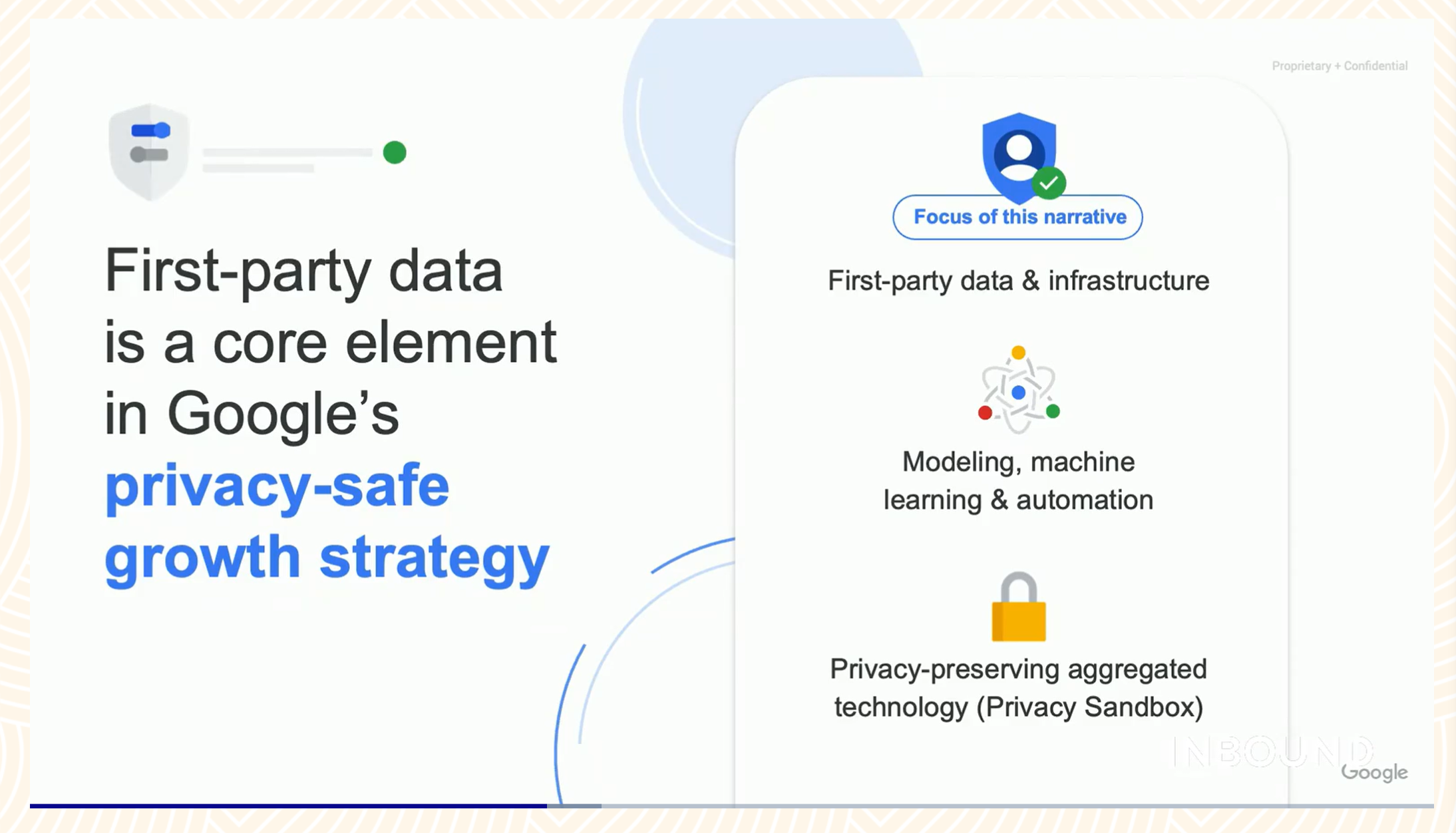
How To Use Your First-Party Data To Drive Privacy Safety Growth
Google has developed a three-step approach to help marketers use their first-party data.
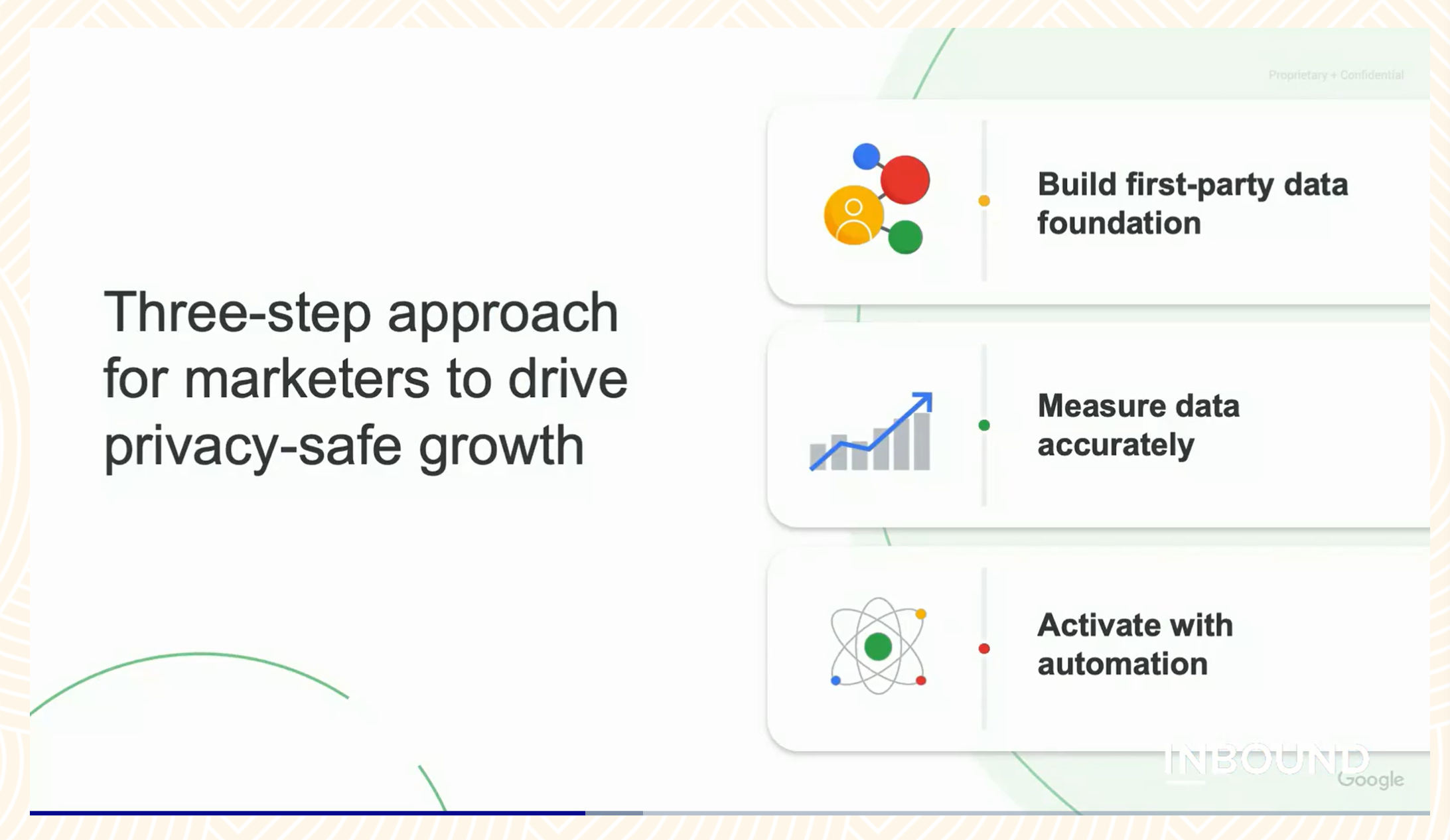
So let’s break each step down.
Build First-Party Data Foundation
Only 30% of marketers collect and integrate their data across channels. 1% are using their data to deliver fully cross-channel experiences. There is a huge opportunity to be had when you invest and work with your first-party data. So why aren’t we?
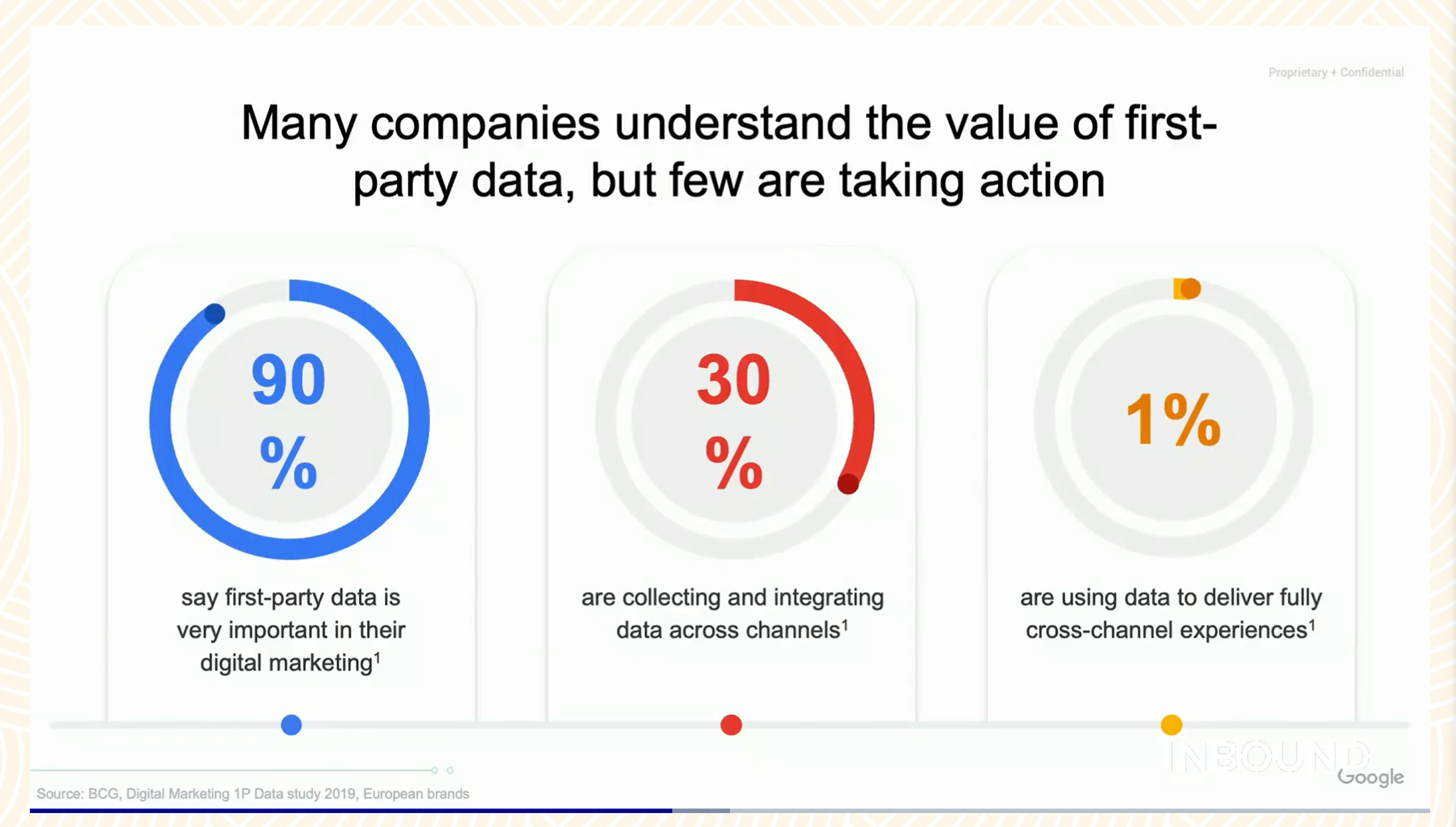
Google Tagging allows marketers to collect first-party data and observe their conversions in one place. It allows you to build your first-party data foundation and future-proof your business by keeping up to date with privacy updates on Google. It can even be implemented with HubSpot!
Measure Data Accurately
Parish offers three solutions from Google to adopt today to measure your first-party data accurately.
- Enhanced conversions for web: helps track online purchases in a cookieless world. And match real-time purchase data with that already on your database.
- Consent Mode: Adjusts tag behaviour based on the responses made by customers through the cookie banner on a web page.
- Google Analytics 4: The newest version of Google Analytics which is future focused on privacy, with conversion modelling and behaviour modelling. Google Analytics 4 will replace the current version in 10 months.
These solutions will help future-proof your business against any cookie laws that may change, as well as provide a trusted experience for your customers, by allowing them to choose their data preferences.
Activate With Automation
Automated bidding is not new in the marketing world, but now it’s time to combine automation with your first-party data. When combined, marketers saw conversion volume increase by 27%. Pretty impressive right?
Another solution Parish picks up on is Google’s Customer Match, a privacy-first audience solution that lets you reach and engage with existing users and find similar audiences on google networks. When finding matches, it gives you the capability to create campaigns to reach and engage with users.
What Does The Future Hold?
Parish shows us three key steps that we expect to see in the long term.
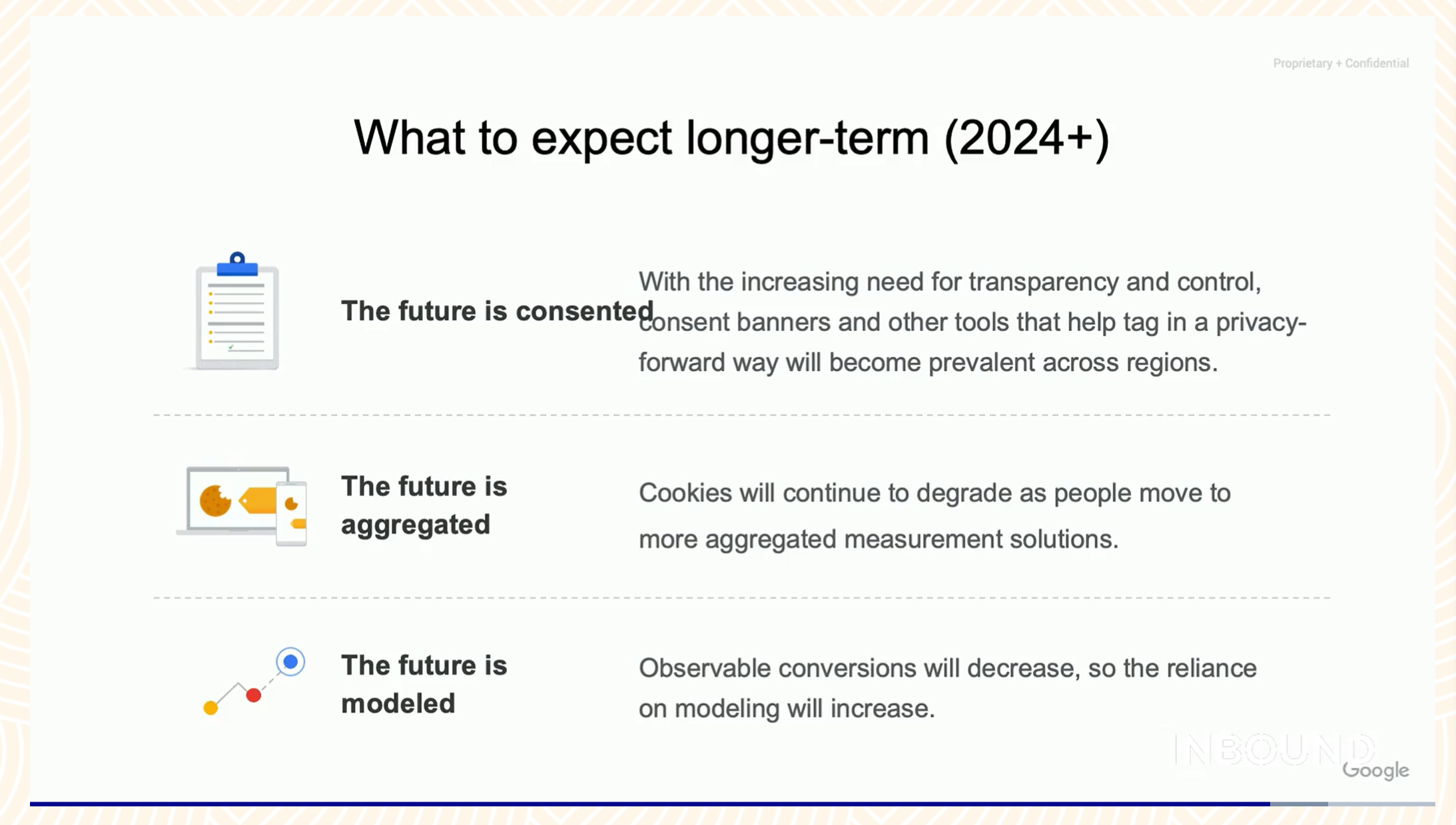
We can definitely expect to see more companies become more transparent with the need for and use of customer data to retain customer trust and relationships.
And as privacy regulations and new technologies change regularly, it is important for marketers and businesses to keep up to date with legislation and adopt new solutions for future-proofing.
Adopting these strategies early allows you to be ahead of your competition; it increases your customers’ trust and gives your conversion and behaviour models time to gather data and optimise your advantage.
All the while, the rest of the world is reacting to change and running to catch up with you.
